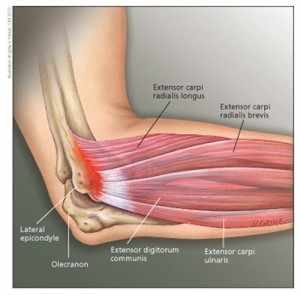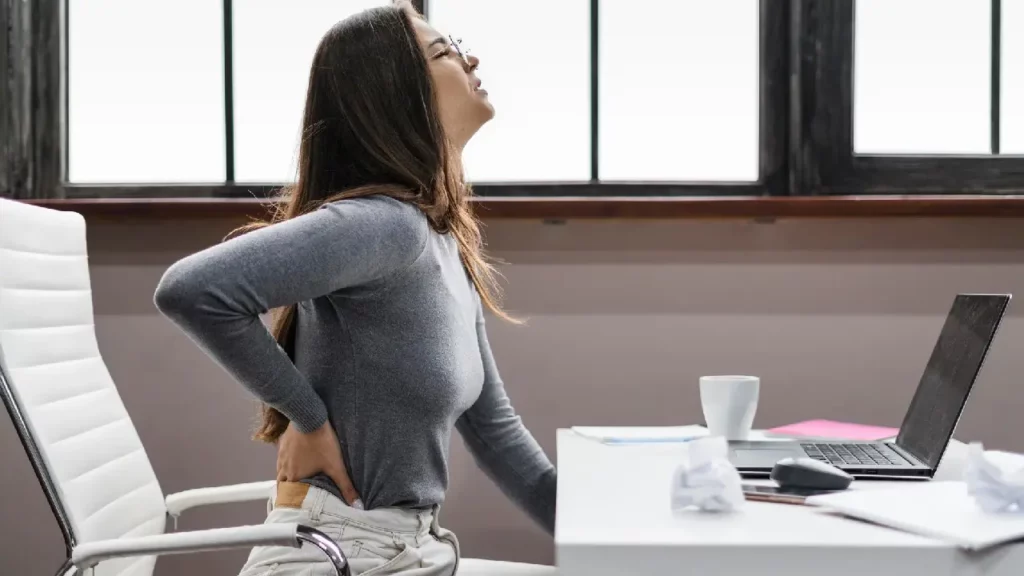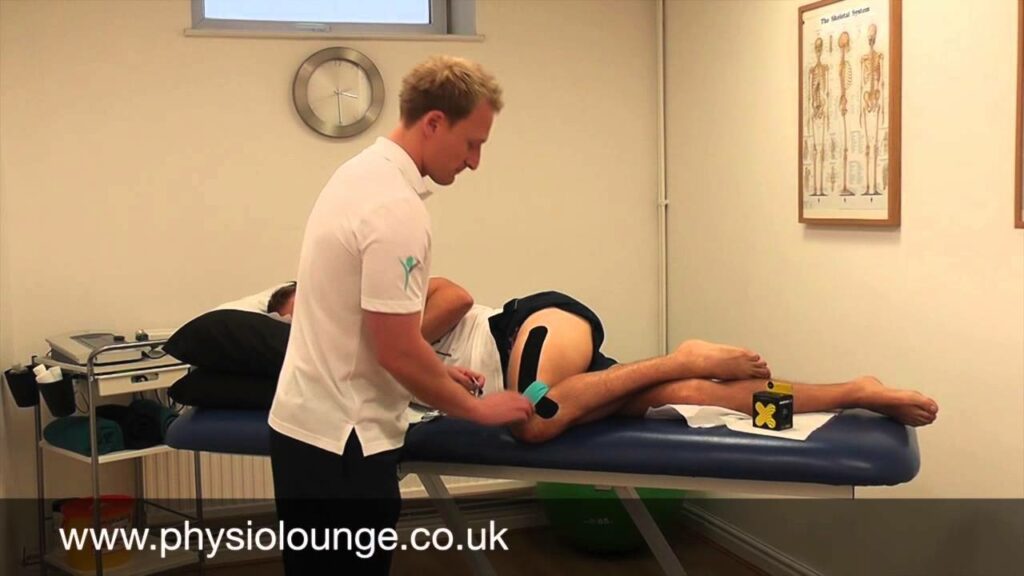Tennis elbow… you cannot be serious!! A reference for the more mature sports fans among us, and a great excuse to put this otherwise irrelevant, yet hilarious picture of McEnroe into my blog!

I don’t know what’s more offensive; his foul-mouthed disregard for authority, or those shorts!
So… elbow pain, tennis elbow, lateral epicondylosis, extensor tendonosis, elbow-itis (yes… I’ve totally made the last one up)!! Many names, none of them particularly accurate, but all describing a similar thing…pain on the outside of your elbow. Commonly with lifting, gripping, or using the computer. The exact cause is not clear, but it does seem to be linked to repetitive actions.
The problem is with the muscles that pull your wrist back (extension), specifically the extensor carpi radialis brevis. Following repetitive loading, muscles are over-worked and the mobility of the muscle and fascia is restricted. The diagram below shows how this can lead to degenerative change, resulting in pain and loss of function.

The most common causes of lateral epicondylosis are keyboard and mouse use, excessive loading at the gym, or a sudden change in activity…and, of course… tennis! In fact, most cases of lateral elbow pain we see are usually associated with office work and nothing at all to do with tennis.
The first sign of tennis elbow is usually tenderness when pressing on the outside of the elbow over the bony bump called the lateral epicondyle. This pain may extend down into the hand. If left untreated, other symptoms can develop such as:
- Swelling
- Pain when the wrist is pulled backwards (extension)
- Pain with lifting objects
- Pain when shaking hands
Sometimes, other conditions that are not linked to tennis elbow can cause pain in the elbow. For example; arthritis of the elbow, a nerve irritation in the neck, shoulder impingement and carpal tunnel syndrome. It’s also worth noting that altered biomechanics around the shoulder girdle can lead to excessive loading of the elbow. Therefore, a thorough shoulder girdle examination is always advised when symptoms like we have described are present.
Treatment:
The first step in treating tennis elbow is to manage the activities that cause the pain…so everybody…step away from the tennis racket! But perhaps don’t throw your work PC out of the office window just yet, I don’t think we can class that as ‘medical advice’!
Pain killers can help to relieve the symptoms, enabling movement, and a tennis elbow strap or clasp can be worn just below the elbow to limit the load on the extensor tendons.
Finally, did you expect anything else…physiotherapy! There are a number of tools we use at The Physio Lounge to treat elbow pain of this type. The main focus is to improve blood flow, mobilise restricted tissue and strengthen the appropriate muscles, particularly the eccentric phase, which we will show you below. It’s always worth looking at the neck, shoulder and wrist to rule out any contributing issues in these joints.
In the event that conservative management fails, then Platelet Rich Plasma (PRP) injections can be very useful. This type of injection has been shown to be more effective than steroid injections, which can delay the recovery of the problem in the long term.
In summary:
- You don’t have to be a tennis player to have tennis elbow!
- Physiotherapy treatment is always a first line approach to lateral epicondylosis.
- Treatment should focus on restoration of tissue mobility, improvement of eccentric control in the extensor bulk, and improvement in tissue perfusion (blood flow).
- PRP injections are a useful option, in the event of physiotherapy not being successful, in order to promote tissue healing.
- Short, tight, white tennis shorts will give you anger management issues and sore elbows… don’t do it to yourself (this is not scientifically proven)!
Below is a video containing two rehabilitation exercises; one is an eccentric loading exercise, prescribed to improve muscle control around the elbow, and the other is a ‘floss band’ mobilisation technique, which is used to ‘unstick’ tight tissue.
So remember… look after your elbows… do your rehab… and keep that temper under control, it’s bad for your health! For more information on how physiotherapy can help with tennis elbow or for a free telephone consultation contact us here.



